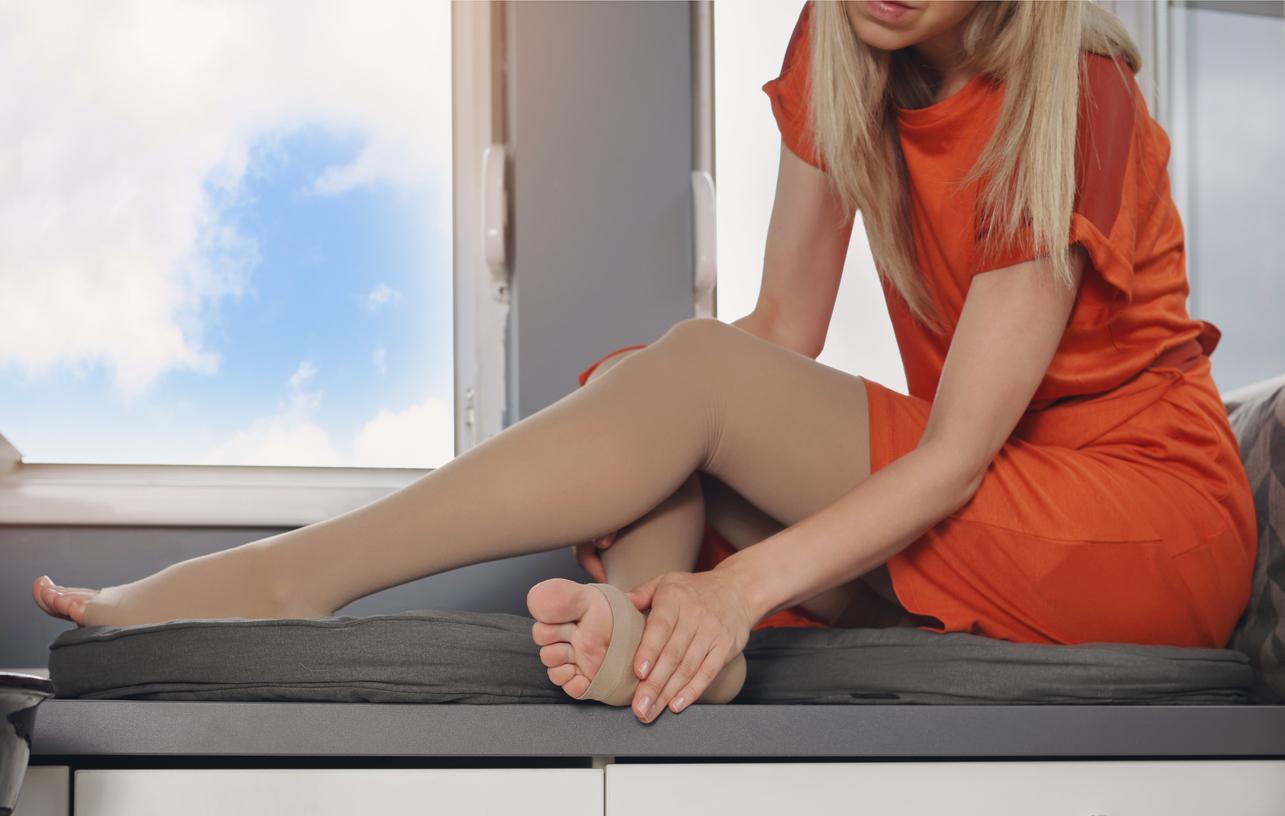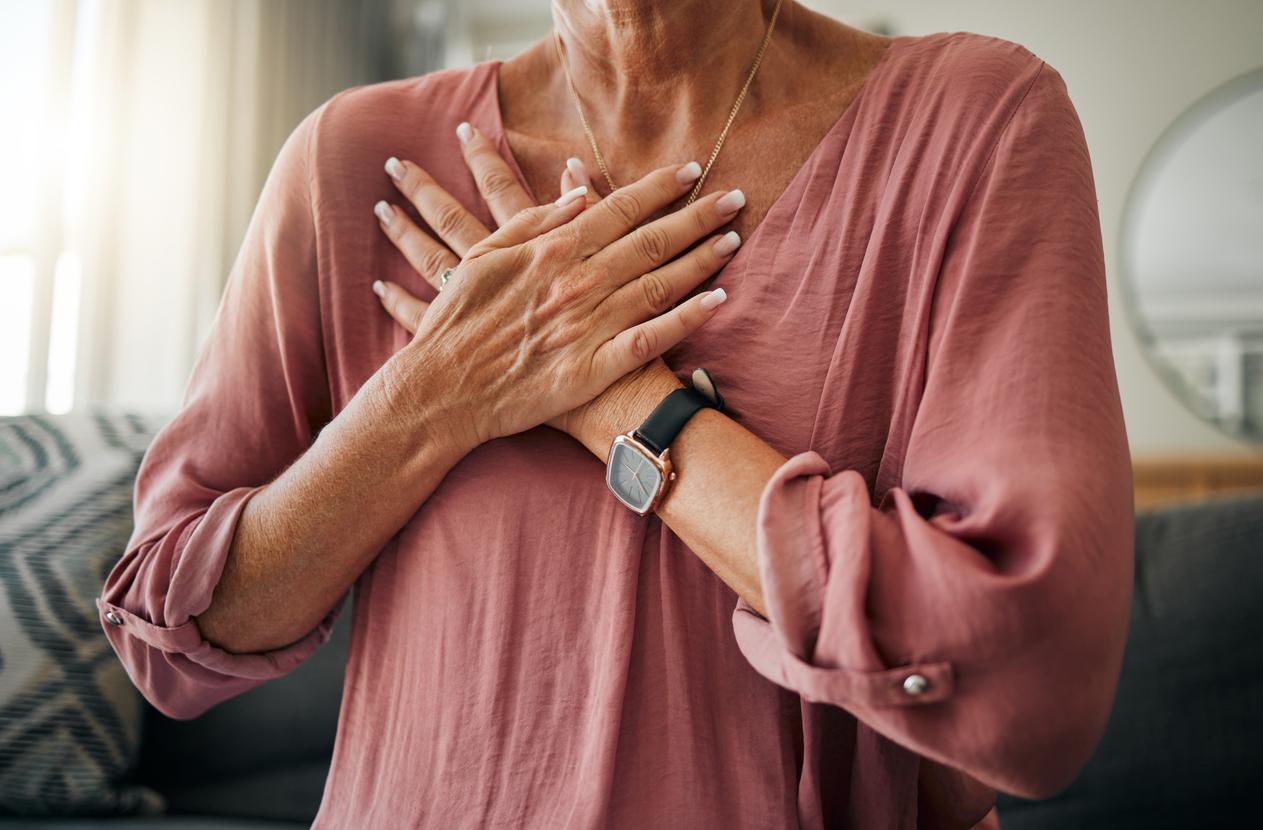Venous disease is a chronic and progressive disease. This is why it is necessary to take care of it as soon as the first signs appear, as Dr. Christelle Bougard, vascular doctor and phlebologist, reminds us.

Should we worry about the appearance on the legs of the marks of small burst vessels? If these varicosities most often pose, in the first place, a simply aesthetic problem, they must in fact alert: they can be one of the first signs of the appearance of venous disease. This, also often called “venous insufficiency”, deserves the full attention of the patient: it is a pathology for which there is no cure, which is progressive and which can lead to serious forms such as phlebitis, which itself can lead to pulmonary embolism with the vital risk associated with it.
A disease of the circulatory system
“Venous insufficiency is a disease caused by a weakness in the walls of the veins”, explains Dr. Christelle Bougard, vascular doctor and phlebologist, thus indicating the need for care and follow-up: it is indeed a disease of the circulatory system, the proper functioning of which is essential for the functioning of the heart and our whole organism. “In case of insufficiency, the veins are not tonic enough, and instead of allowing a good rise of blood towards the lungs and the heart [pour y être oxygéné et relancé dans le corps par les artères, NDLR], the blood tends to stagnate and fall back down; the vein expands, which creates varicose veins and downward hyperpressure which causes the vessels to burst”specifies Christelle Bougard.
Thus told, the appearance of varicosities and varicose veins no longer appears at all as a simple aesthetic discomfort! Especially since these signs are most often accompanied by “pain and heaviness in the legs, especially when it’s hot and you’ve walked a lot”as explained by the phlebologist practitioner.
Symptoms that alone justify a consultation and management of the disease. What, at first, may be limited to simple changes in lifestyle – to fight against excess weight or sedentary lifestyle – to taking venotonic drugs whose effectiveness is now recognized – even if their reimbursement is no longer covered by health insurance for economic reasons – or the wearing of compression garments.
“Relieve and avoid complications”
“It is especially necessary to treat to relieve and avoid complicationsaccording to Christelle Bougard, who evokes the manifestations of all stages of this progressive disease. There are skin complications, the skin becomes more and more thin, becomes pigmented and gives dermatitis which can itch and cause varicose eczema”she continues.
Venous disease, unfortunately, does not stop there if left untreated. “At a more important stage, leg ulcers occur, wounds which do not heal well and which can last several months, warns the phlebologisteven if we see less and less of them today thanks to the prevention of varicose veins.”
The risk of phlebitis and pulmonary embolism
However, the most important danger in a poorly controlled progression of venous disease is the risk of phlebitis. “These are clots that form in a vein and block the circulation in return; not only does phlebitis cause pain and inflammation, but above all it is accompanied by the danger of seeing the blood clot migrate to the lung”, warns Christelle Bougard. At that time, the venous disease, from the small aesthetic concern it represented at the start, quite simply leads to the presence of a vital risk, that which is linked to the pulmonary embolism caused by the arrival of the blood clot in the lungs. And there, the figures speak for themselves: each year in France, approximately 100,000 cases of pulmonary embolism are recorded, resulting in the death of 5 to 10,000 patients.
A test to assess the risk
This always possible evolution towards serious stages of the venous disease means that medical monitoring and appropriate treatments are necessary as soon as the first symptoms appear. Unfortunately, far from this situation in France since various studies show that 30% of those affected are not treated and that the first treatment occurs on average 7 years after the appearance of the first symptoms. Findings which have also prompted a team of doctors led by Doctor Vincent Crébassa to develop a test called “Vein Test”, making it possible to assess the risk for a person of being affected by venous disease and to see at what stage is the disease for those in whom it is already declared.

Below, the report with Dr. Chistelle Bougard:
Below, Doctor Vincent Crébassa’s interview on the Vein Test:
.
















